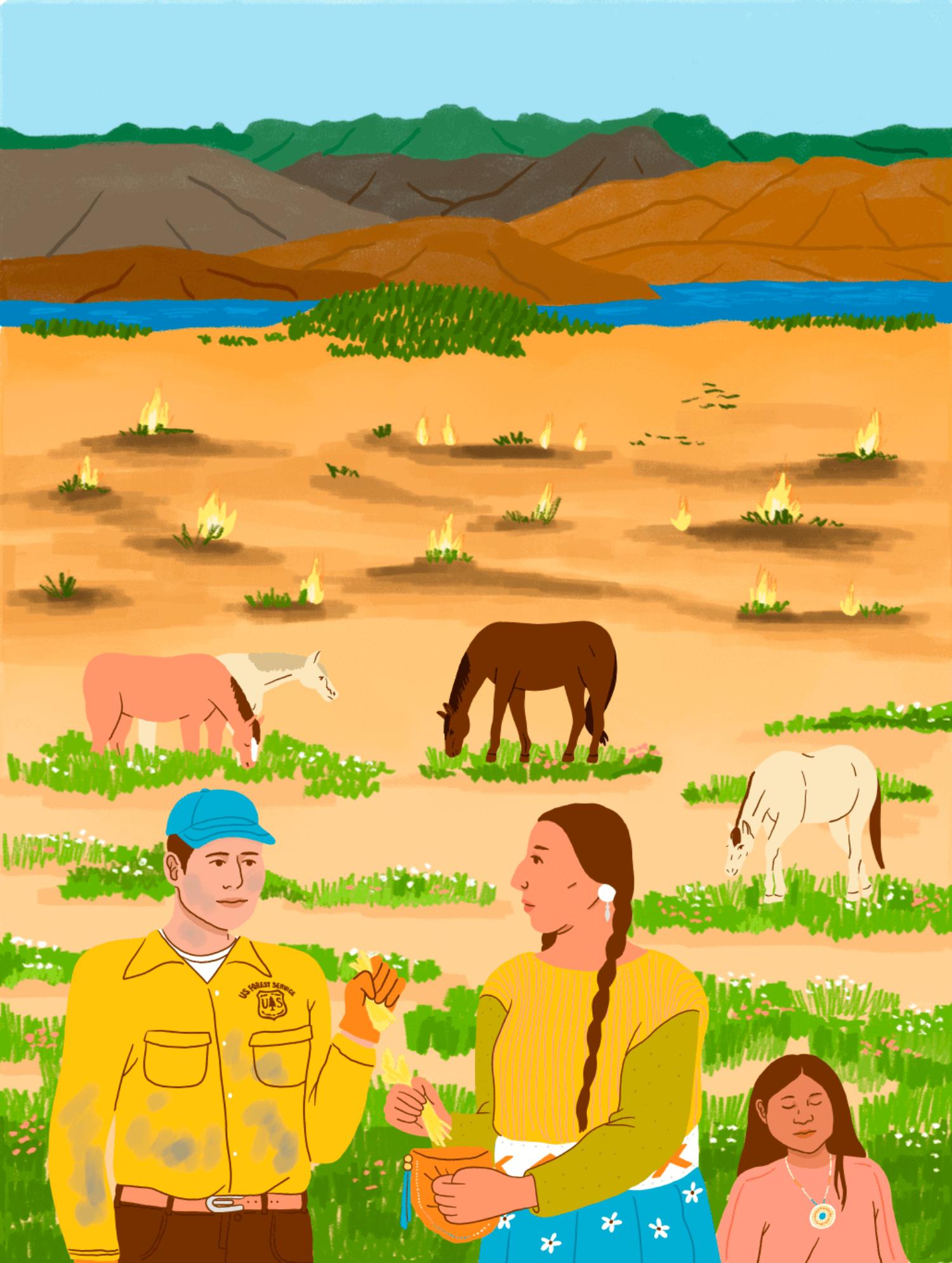Authorities are belatedly realising that ancient forest management practices can have a dramatic impact, curbing the risk of disastrous blazes. As our changing climate makes wildfires more likely, cottoning on to Indigenous wisdom has been a slow burn, but is finally happening
Fight fire with fire. As a phrase, it’s familiar. As a practice it was, until recently, all but forgotten.
We fight fire with high-pressure hoses, with chemical foam, and when occasion demands, we bomb it with water from firefighting planes. And it works, after a fashion. Sooner or later – often later – the fires subside, and people return to their homes. Or what’s left of them.
But the world turns, the winds blow, and the fires revive. It’s wildfire season in North America, and once again, the news is filled with images of flames racing through forest. As I write this, there are more than 100 fires ablaze in the western US alone, with 4.5m hectares going up in smoke. Up in Canada, more than 200 communities are under fire evacuation orders, rekindling fears of a disaster like that which struck in British Columbia (BC) in 2021, when the town of Lytton was virtually wiped off the map.
So what’s to blame? The climate crisis for one, of course, with heat and drought making the understory tinder dry, and strengthening the winds that fan the flames. Building new housing blocks surrounded by forest may not have been the wisest course, either. But increasingly the finger is pointing at decades of forest management practices – ironically, including fire suppression – that have allowed flammable vegetation to pile up.
It’s fashionable these days to seek answers to modern crises in the ancient wisdom of Indigenous peoples, and the wildfire surge is no exception. But when you hear the response from leaders of the Salish of BC, the Coast Miwok in California, or even the native communities of Australia’s Northern Territories, you could be forgiven for thinking they’d lost the plot. Because to stop forest fires, they argue, you should … set fire to the forest.
It sounds mad, but there’s method at its heart. Behind the apparent contradiction in terms lie centuries – millennia, even – of Indigenous forest management. From northern Canada down to California, and across to Australia, native peoples have staged small, controlled burnings of forests and grassland. In the Northern Rocky Mountains, for example, the Salish and others would set fires to promote grazing for their horses and encourage the growth of food and medicinal plants by returning nutrients to the soil.
Crucially, such small, controlled fires – now known as ‘prescribed burns’ – would also avoid the buildup of brushwood and dead plant material that could act as fuel for larger, more dangerous fires. Of course, from time to time, more damaging blazes would break out, but rarely on such a disastrous scale – for lives and livelihoods, as well as nature – as today.

A depiction of traditional burning by Arizona-based illustrator Lynne Hardy, a member of the Navajo Nation
So it’s bitterly ironic that such Indigenous wisdom was swept aside last century. Rather than pausing to consider why people who’d lived in and with the landscape for generations might choose to set fire to it, forest authorities saw them as merely ignorant: there’s no such thing as a ‘good fire’, they decided, and so tried to ban the practice. One Indigenous fire-setter was reportedly even hanged for his pains. But now the winds are changing. Forest ecologists have come to see the sense in prescribed burns and are bringing traditional wisdom back to the table. A growing number of indigenous experts are working with organisations like the US Forest Service and The Nature Conservancy.
It’s already having an impact. In North Carolina, which has one of the country’s highest densities of urban areas on the edge of forests, there’s a particular urgency. Here, residents of one forest community have set up the Sandhills Prescribed Burn Association, learning from experts and each other how to revive the practice. One commented that it reminded him of barn-raising events in pioneer days, when neighbours would help each other out.
Forest ecologists have come to see the sense in prescribed burns and are bringing traditional wisdom back to the table
And the practice is spreading like, well, a very benign sort of wildfire. There are now more than 130 prescribed burn associations across 22 US states. Andrew Avitt from the US Forest Service summed it up when he said: “Fire is no longer the problem. It’s part of the solution.”
The Salish could have told them that a long, long time ago. But better late than never.
Martin Wright is a director of Positive News
Illustration: Lynne Hardy